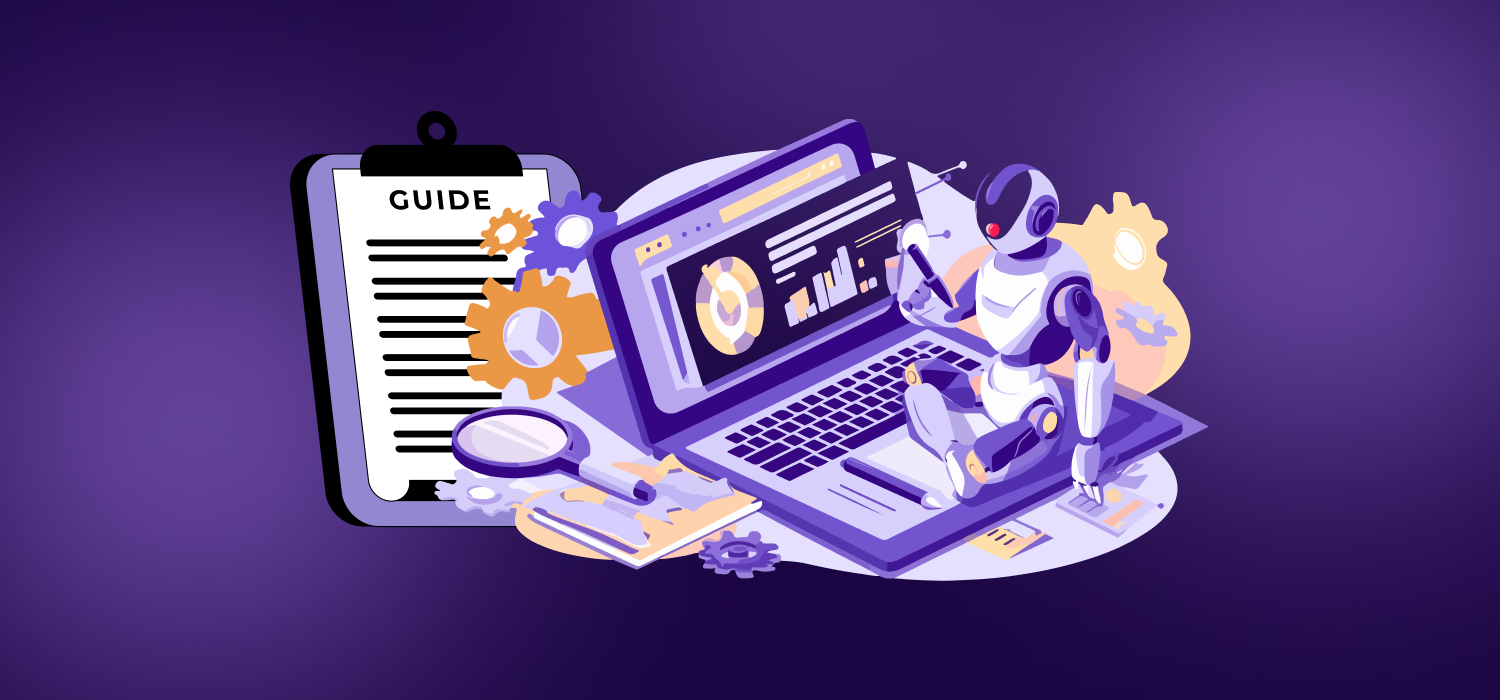Ultimate Guide to RPA Solutions and Services
If you’re wondering how businesses around the world are automating tasks, boosting productivity, and cutting costs, then you’re in the right place. The answer? Robotic Process Automation (RPA).
You might have heard about RPA, but you might still be asking, “How exactly can RPA help my business?” Whether you’re looking to optimize your internal processes or automate repetitive tasks that eat up time, this guide will walk you through everything you need to know about RPA solutions and services, and how to get started.
This is the exact approach SynapseIndia have used to help businesses just like yours streamline operations. Trust me, once you get the hang of RPA, it’ll feel like you’ve just unlocked a hidden level of productivity.
So let’s dive in, and by the end of this, you’ll know exactly how to leverage RPA to improve your business.
Understanding RPA Solutions
Before we dive into the nitty-gritty of how to implement RPA, let’s first understand what it actually is. Robotic process automation (RPA) is the use of modern technology, such as artificial intelligence (AI), machine learning (ML), and natural language processing (NLP), that are driven by structured inputs and business logic to automate repetitive and routine business tasks.
It is all about using software robots or “bots” to automate repetitive, rule-based tasks that humans typically do. These tasks can include anything from data entry and invoice processing to more complex workflows that require interaction with various software systems.
RPA is like having an invisible workforce that works 24/7 without needing breaks, holidays, or sick days. These bots can follow simple instructions and perform tasks like clockwork. They’re fast, they’re accurate, and they don’t mind doing the same thing over and over again.
RPA is here to stay, at least for the next decade, with the changes in RPA business models like RPA-as-a-Service and new development methodologies like low-code and no-code.
Top RPA Software Platforms
Let’s talk about the tools that make RPA work. There are several RPA software platforms on the market, each with its own strengths and weaknesses. The right platform for you will depend on your business needs, budget, and the level of complexity you’re willing to take on.
1. UiPath
UiPath is one of the most popular RPA platforms around, and it’s easy to see why. It’s known for its user-friendly interface, making it easy for businesses of all sizes to get started with automation. With UiPath, you can automate both simple and complex tasks without needing to be a coding expert.
Key features:
- Intuitive drag-and-drop interface: You don’t need to be a programmer to build workflows.
- Scalable solutions: From small tasks to large-scale deployments, UiPath can handle it all.
- Advanced AI integration: For more intelligent automation processes, UiPath integrates AI for complex tasks.
- Cloud capabilities: Flexible and scalable, with cloud deployment options.
2. Automation Anywhere
Next up is Automation Anywhere. If you’re looking for a platform that can handle both basic automation and more advanced use cases with machine learning, Automation Anywhere is a great choice. It’s designed for businesses looking to scale and evolve their automation as their needs grow.
Key features:
- AI and ML integration: Leverage AI to enhance bots with intelligent decision-making capabilities.
- Cloud-native platform: Easily scale your operations with cloud-based automation.
- Bot Insights: Provides real-time analytics to help you measure the performance of your bots.
3. Blue Prism
Blue Prism is an excellent option for large enterprises that need an RPA platform with a high level of security and governance. This platform is highly customizable, and it’s designed to handle more complex automation tasks.
Key features:
- Enterprise-grade security: Perfect for businesses with strict data protection needs.
- Scalable and customizable: Tailor automation solutions to meet the needs of large organizations.
- Integration with existing IT systems: Smoothly integrates with a wide range of enterprise systems.
Factors to Consider When Selecting an RPA Solution
Choosing the right RPA platform is critical for success. Here are a few factors to consider:
- Ease of use: Some platforms are more user-friendly than others, so think about how easy it will be for your team to adopt the tool.
- Scalability: Will the platform be able to grow with your business? Consider the scalability of the solution.
- Support and training: Check if the platform offers adequate support, documentation, and training resources.
- Integration capabilities: Ensure the platform can easily integrate with your existing systems, such as CRM, ERP, and other software.
- Cost: Compare pricing models to see which platform fits your budget and offers the best ROI.

RPA Implementation Approaches
Once you’ve chosen the right platform, it’s time to think about how you’re going to implement RPA in your business. There are different approaches to RPA implementation, and it’s important to pick the one that aligns with your goals.
Attended vs. Unattended automation
When it comes to RPA, there are two main types of automation: attended and unattended.
- Attended automation: This is when the bot works alongside a human. Think of it as a co-worker that helps with tasks on-demand. It’s great for processes where a human needs to oversee the automation, like customer service or sales.
- Unattended automation: These bots work completely on their own. They don’t require human intervention and can work 24/7. This type of automation is ideal for back-office tasks like data entry, invoice processing, and report generation.
Enterprise-Wide vs. Process-Specific RPA deployment
You also need to decide whether to implement RPA across your entire organization or focus on specific processes.
- Enterprise-Wide RPA: This approach involves automating multiple processes across different departments in your organization. It’s ideal for businesses looking for large-scale transformation and streamlining workflows.
- Process-Specific RPA: This approach focuses on automating specific tasks or workflows, such as invoice processing or customer onboarding. It’s perfect for businesses just starting with automation and looking to build a foundation.
Considerations for Successful RPA Implementation
Successful RPA implementation doesn’t happen overnight. Below are some considerations that you should keep in mind:
- Set clear objectives: Define what you want to achieve with RPA, whether it’s saving time, reducing costs, or increasing accuracy.
- Employee involvement: Involve employees in the process. Address any concerns and train them to work alongside the bots.
- Continuous improvement: Automation isn’t a one-and-done deal. Continually monitor and optimize your RPA to ensure it’s delivering maximum value.
RPA Integration and Scalability
Integrating RPA into your existing systems is one of the biggest challenges—but it’s also one of the most rewarding. RPA tools need to be able to work seamlessly with your current systems, and scaling them across the organization is critical for long-term success.
Integrating RPA with existing systems and workflows
RPA works by interacting with existing software and systems—without requiring massive overhauls. Whether you’re using CRM, ERP, or even custom in-house applications, RPA bots can connect with them and automate tasks.
However, integration isn’t always smooth sailing. The complexity of your existing systems, data structures, and workflows will affect how easily you can integrate RPA. But don’t worry—many RPA platforms provide connectors and APIs that make it easier to integrate bots with existing systems.
Scaling RPA solutions across the organization
As you begin automating processes, you’ll want to think about scaling. You can start small, but soon enough, you’ll want to scale automation across multiple departments and functions.
Make sure the RPA platform you choose can handle this growth. Look for tools that are scalable, with cloud capabilities, and the ability to manage multiple bots at once.
Ensuring smooth collaboration between Humans and Bots
When implementing RPA, it’s important to remember that bots aren’t here to replace people—they’re here to work alongside them. As you automate processes, ensure there is a smooth collaboration between your employees and the bots, whether through attended automation or monitoring unattended bots. This will ensure that the human workforce is free to focus on more strategic tasks.
Exploring RPA Services
Once you’ve chosen the right RPA software, you’ll need to think about the services that will help you implement and maintain it. Here are the key RPA services businesses typically use.
RPA Consulting and Advisory Services
Getting started with RPA can be overwhelming, which is why many businesses turn to RPA consulting services. A consultant can help you assess your RPA readiness, identify automation opportunities, and plan the entire deployment strategy. They can also help with change management to ensure employees embrace the transition to automation.
RPA Implementation and Support Services
Once you’re ready to implement RPA, you may need an expert to help configure and deploy the solution. RPA implementation services ensure that the bots are set up correctly, workflows are optimized, and everything runs smoothly. After deployment, ongoing support and optimization services are critical to keep things running efficiently.
RPA Managed Services:
If you don’t have the resources to manage RPA internally, you can outsource RPA operations to a managed service provider. This service handles everything from bot monitoring and troubleshooting to regular maintenance and upgrades, allowing you to focus on core business activities.
Maximizing the Benefits of RPA
RPA isn’t just about setting up bots and letting them do their thing. To truly maximize the benefits, you need to measure success and optimize continuously.
Measuring RPA success:
Define your KPIs (Key Performance Indicators) to measure the effectiveness of RPA in your business. Are bots completing tasks faster? Is there a reduction in errors? Is your team spending more time on high-value activities? Tracking these metrics will help you assess the ROI of RPA and identify areas for improvement.
Addressing RPA challenges:
RPA isn’t without its challenges. Resistance to automation, data privacy concerns, and the risks of over-reliance on bots can all cause issues. It’s essential to address these concerns upfront, with clear communication, training, and security measures in place.
The Future of RPA
As we look ahead, the future of RPA is bright. Emerging technologies like AI, machine learning, and intelligent automation will make bots even smarter and more capable of handling complex tasks.
RPA is also playing a key role in digital transformation across industries, allowing businesses to streamline operations, improve customer experiences, and stay ahead of the competition.
How can SynapseIndia help?
At SynapseIndia, we take a personalized approach to RPA. We start by analyzing your business and identifying the processes that are a good fit for automation. We then design customized solutions that integrate seamlessly with your existing systems. From there, our skilled developers build and test the solutions to ensure optimal performance. Once everything is ready, we deploy the solution, but our job doesn’t stop there. We provide ongoing support to make sure everything runs smoothly, so your business can continue to thrive.
We’ve used RPA to help businesses just like yours unlock new levels of efficiency. We know how important it is for businesses to keep up with the times and stay ahead of the competition. Trust us, once you integrate RPA into your processes, you’ll wonder how you ever worked without it.
Conclusion
RPA is more than just a trend—it’s a transformative technology that can help businesses of all sizes automate tasks, boost productivity, and reduce costs. By understanding RPA solutions and services, you’ll be able to choose the right platform, implement it successfully, and maximize the benefits.
Now that you know the ins and outs of RPA, it’s time to take action. Start exploring RPA solutions today, and unlock new levels of efficiency for your business.
Contact SynapseIndia today to explore how our RPA solutions can streamline your business and drive lasting success.

 contact
contact

 By
By 


